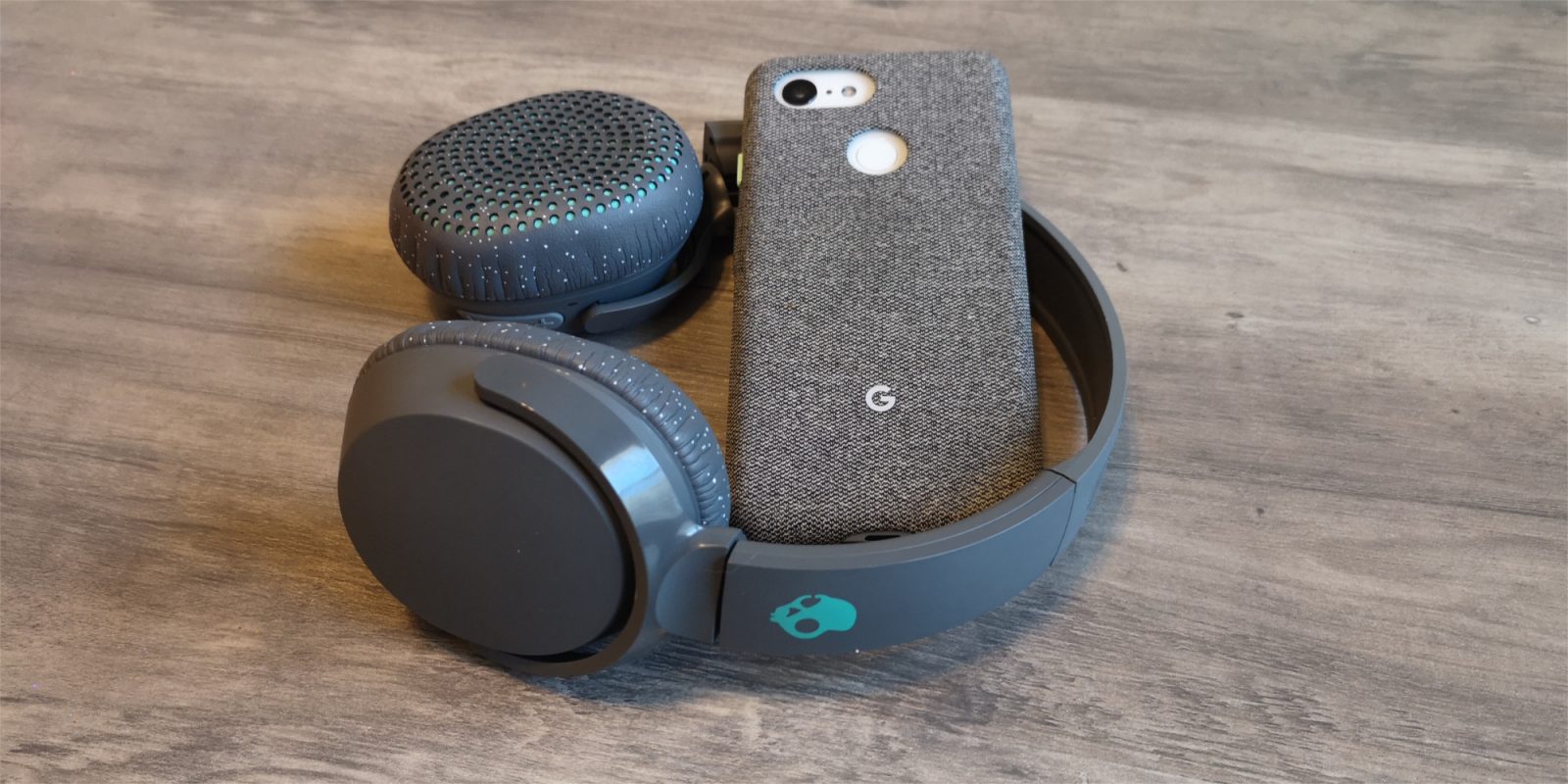
Like it or not, the headphone jack is (more or less) dying. Considering myself firmly in the “not” category, I’ve delayed in getting Bluetooth headphones for years. The Made for Google lineup for 2018 features a decent variety of Bluetooth headphones. Of these, the Skullcandy Riff Wireless, which we’re reviewing today, are the most accessible at just under $50.
SKULLCANDY RIFF WIRELESS REVIEW |
Comfort
Possibly the most important thing, to me, about headphones is comfort. A headset could sound angelic, but if it’s not comfortable, I won’t really enjoy it. I typically opt for a circumaural (or around-the-ear) fit for the ear cups, but the Skullcandy Riff Wireless set is supra-aural (or on-ear).
Thankfully this was not an issue, as the Skullcandy Riff Wireless comes equipped with the softest cushions I’ve ever touched. The material surrounding the cushions also has a pleasant feel to it. In the ear comfort category, I was pleasantly surprised by this headset. Also, as a wearer of glasses, the Skullcandy Riff posed no issues in that regard.
Longer wearing sessions (over 1 hour) can sometimes get a bit uncomfortable, especially when you do finally take the headphones off. This is to be expected from on-ear headphones though.
But what the Skullcandy Riff Wireless has in ear comfort, it unfortunately lacks in headband comfort and quality. I found it difficult to get the plastic headband to sit comfortably on my head, and found it to be mildly unpleasant after a period of time. Wearing the headset to keep the headband away makes the whole set prone to tilting or falling off with head movement. (No headbangers allowed.)
Sound
Most headphones tend to have a unique profile, where a certain sound, or set of sounds (like cymbals or the bass guitar) will be highlighted. For the Skullcandy Riff Wireless, I’d say the specialty is vocal harmonies. For whatever reason, I can very clearly distinguish each voice in songs like Rosanna by Toto.
I also found that lighter songs, especially those featuring instruments like an acoustic guitar or ukulele, sound particularly bright and pleasant. On the flip side, the lows and bass can sometimes be a little underwhelming, especially in tracks from bands like Twenty One Pilots and Linkin Park. This profile is surprising for a headset made by Skullcandy, whose headphones, in my experience, tend toward too much bass.
The Riff Wireless offers a max volume that is more than sufficient, without being deafening. While indoors, I can keep the volume at or below 75%, and outdoors 100% is still just a touch too loud.
Smarts
Using the Skullcandy Riff Wireless as your primary headset is a solid experience, though the 9-hour battery life may fall just short for all-day usage.
During phone calls, you’re very aware of how you sound and if your surroundings are noisy, as the input is played back to you. The same applies any time you use the microphone, including talking to the Google Assistant.
Speaking of Assistant, the Skullcandy Riff Wireless can call for the Google Assistant (or Siri on iOS) with a double-tap of the center button. This is useful for anything you would normally use the Assistant for, including answers to questions and requesting different music.
Should you buy it?
All things considered, the Skullcandy Riff Wireless are a decent set of headphones at a decent price. If good audio matters to you, and you’ve got a little more to spend, definitely consider other models. But if you’re on a budget or just easy to please, the Skullcandy Riff Wireless will do the job just fine.
You can pick up the Skullcandy Riff Wireless for $49.99 on Amazon and the Google Store. If you don’t need Bluetooth and don’t care about the “Made for Google” branding, you can pick up the same set for $20 retail.
Check out 9to5Google on YouTube for more news:
FTC: We use income earning auto affiliate links. More.





Comments